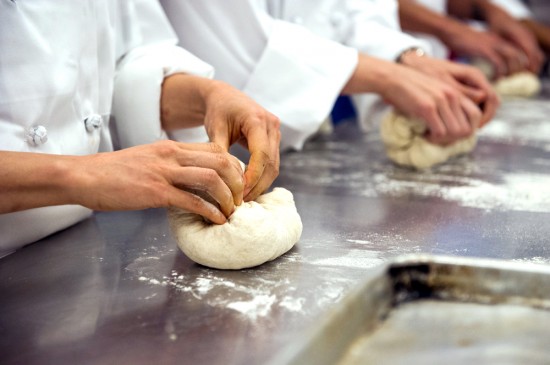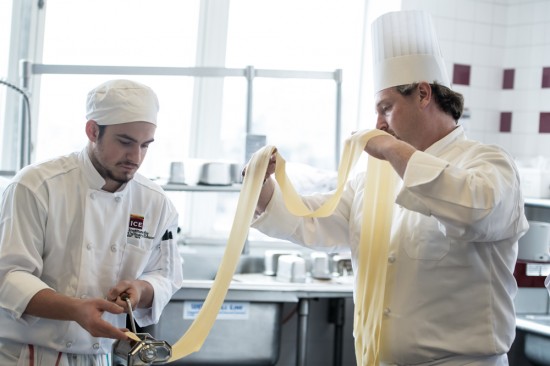If you’re a culinary or pastry student at ICE and haven’t heard the word “trail” yet, you will soon enough! Just as “86,” “mise en place,” and “hot behind!” are all part of the unique and universal kitchen lingo, the concept of the trail is also a defining aspect of the restaurant world.
Imagine going for a job interview that lasts 8-12 hours, where your potential employer poses questions while you casually peel carrots and de-stem thyme. You get a firsthand view of what life on the job would be like…by actually doing the job. In short, it’s unlike any other type of interview.
All ICE students trail as part of their externship selection process, but it doesn’t end there. Restaurant professionals continue to trail throughout their careers, from their first job as garde manger to years later, when they’re vying for an executive chef position.
A trail is a working audition: a chance to show your best work, from knife skills to efficiency to knowledge of ingredients. It’s a chance for an employer to see if you would be a good fit on their team. It’s also an opportunity for you to experience the specific culture and environment of a kitchen and decide if it’s the right place for you—something you’ll never get from an interview for a more traditional job.
So, now that you know what a trail is, how can you ace the opportunity and land the job? The most important first step is to go in with a positive attitude, an eagerness to work and a willingness to listen and learn. Here are some additional “FAQs” that we frequently get from students at ICE:
What should I wear?
First impressions start at the front door, before you change into your chef whites. Generally, a nice pair of pants and button-down shirt are appropriate to wear to the restaurant. When you change into your uniform, make sure it is ironed, clean and complete—kitchen shoes, socks, hat, apron, hair tied back, etc. Leave your jewelry at home and go light on any make-up or perfume.
What should I bring?
Your knives — but not every single one! Just bring the five essentials: your chef’s knife, paring knife, serrated knife, peeler and sharpening steel. For pastry students, add an offset spatula and a thermometer. Also, be sure to have a pen, a sharpie and a small notepad to take notes.

What NOT to bring?
Valuable items. Wads of cash. Jewelry. iPads and other electronic equipment. And while they don’t expect you to leave your phone at home, be sure it is turned off and out of sight in the kitchen.
When is the best time to contact a chef?
Generally, it’s best to reach a chef before or after service on less busy days in the restaurant (normally Monday to Thursday, between 3-5pm).
How many trails should I go on?
Every student is different, but a minimum of three to five trails is generally a good amount for your first job. Once you’re working in the industry, you can do one-day trails or short “stages” at as many restaurants as you like. The general rule is to see enough different kitchens to compare sites (but not so many that it completely muddles your thinking). If you keep these simple guidelines in mind, you’ll go into each trail with the confidence to tackle whatever is asked of you.
Click here to learn more about ICE's career training programs.





